🇹🇯 Tajikistan – the Pamir Highway
10 days and 1,370km (Total: 104 days and 21,162km)
Three hours after exiting Afghanistan, we were sitting in a border hut sharing fruit and energy drinks with the Tajik immigration staff. We needed to pay $10 to import the bike, but they had no change for our $100 note, so we started asking random passers-through if they could help. Eventually a friendly Tajik man pulled out a wad of cash and swapped our dollars for somoni — but only once he’d made sure the note was as crisp as a new one. That matters here.
Meanwhile, the system wasn’t accepting Becs’s Portuguese passport, but that got solved when one of the officers said “Hang on a moment,” took it round the back, and returned with it magically stamped.
A few hiccups, but they felt so minor after Afghanistan that we just took them on the chin with a smile.
In need of rest, we nailed it straight to Dushanbe, the capital. We’d booked two nights — but that turned into six after I was floored by Tajik Tummy and confined to bed. I couldn’t tell you much about the city, but I could certainly give you a detailed review of our bathroom and the sweets aisle in the supermarket across the road. Becs knows I’m not doing great when I’m watching YouTube videos like “How to drive a golf ball straight” at ten in the morning.
The Pamir Highway was waiting. Part of the ancient Silk Road, it’s been used for millennia as the only viable route through the mountains connecting Afghanistan, Tajikistan, Uzbekistan, and Kyrgyzstan. The Soviets turned it into an actual road in the 1930s and named it the M41. It’s famous for its Mars-like scenery, and infamous for sporadic landslides, deep river crossings, and dreadful road conditions.
A week later than planned — and finally ready to trade the toilet seat for the bike seat — we set off.
We left Dushanbe and rode east along the Panj River, which literally forms the border with Afghanistan. It was a scenic and gentle ride, exactly what I needed to get back into the rhythm. Kids played on both riverbanks, seemingly metres apart but a world away in every other sense. Tajik military patrolled their side to stop people crossing illegally.
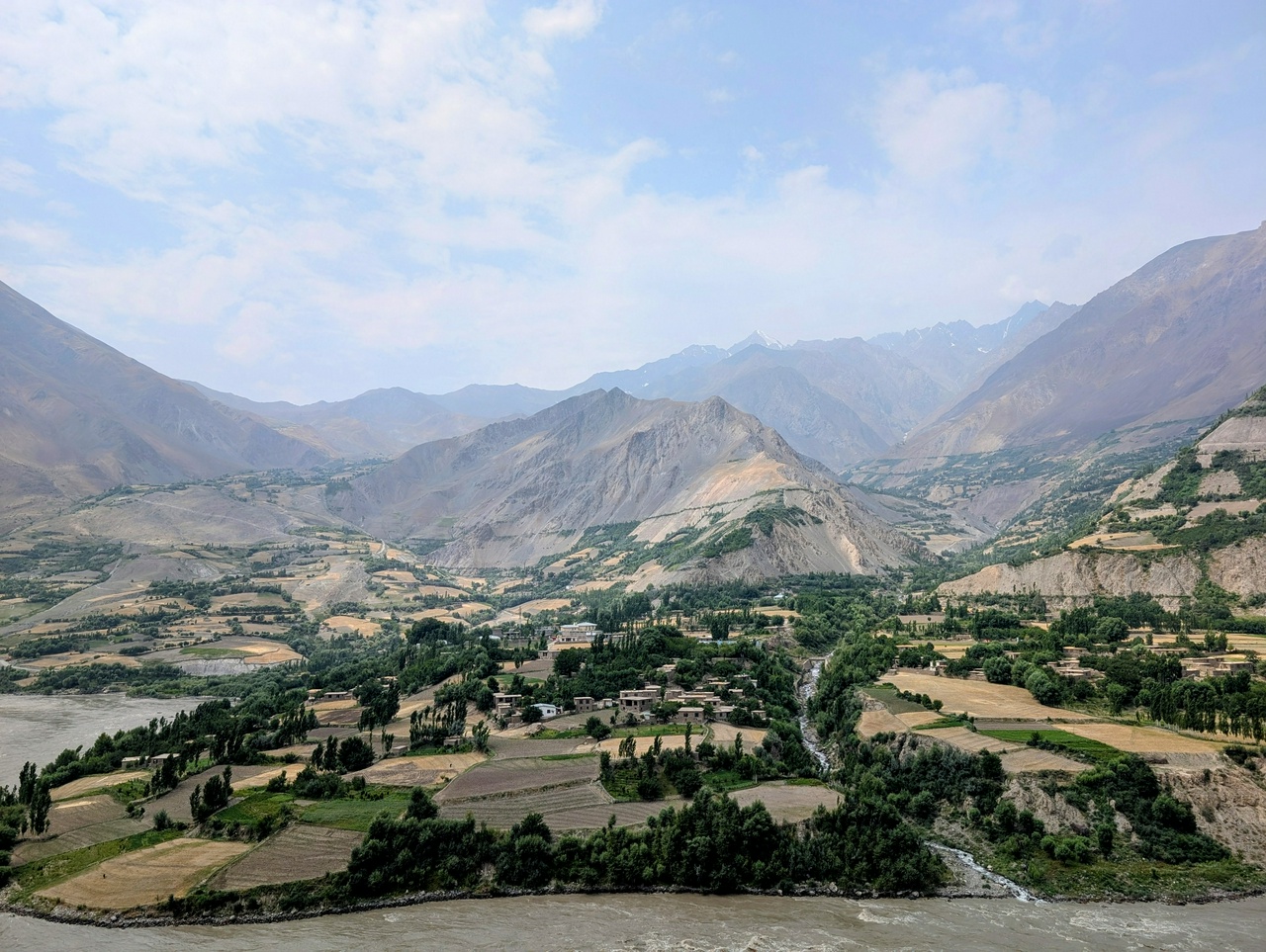
Five hours later, we reached the first town. We knocked on a hostel door and asked how much. The guy wrote “200” on a calculator (about €20), so we took off our boots and unpacked. Thirty minutes later he reappeared and typed “300”. He had changed the price (apparently not unusual in Tajikistan) so, out of principle, we did the last thing we wanted to: got dressed again and repacked the bike. We rode to the next place down the road and quadruple-confirmed the price before unpacking. That night we had soup and a small plov for dinner and swapped stories with a French couple who’d cycled all the way from Lyon.
On our second day, we followed the Panj River again but the road got rough. Broken asphalt, deep sand, gravel, and narrow passes barely wide enough for two vehicles. The bike was enjoying it even less than I was. From the intermittent revving and dirt flying everywhere, the clutch got stuck at full tension and wouldn’t stop slipping. I couldn’t loosen it with my hands because sand and dirt had locked it in place. So we were stuck in first gear for 20km, with another 100km to go.
We passed a sign for a car mechanic and rolled down the path to his house. He called his brother (who spoke English), poked around, and said he needed to open the engine. I knew that was total overkill so eventually — and proudly — I fixed it myself (with a phone call to my dad).
For the rest of the day I was too focused on dodging rocks and potholes to enjoy the landscape, but Becs was taking it all in.

On the third day, we ascended away from civilisation and into the heart of the Pamirs. Trucks had battered the road to pieces over the last hundred years, so it took us nearly six hours to cover just 200km, probably shaving a few years off K’s lifespan in the process.
As we climbed higher — above 4,000m — the scenery became breathtaking, literally. We passed a few cyclists and the odd truck, but mostly it was just us and the bike immersed in surreality for hours on end.
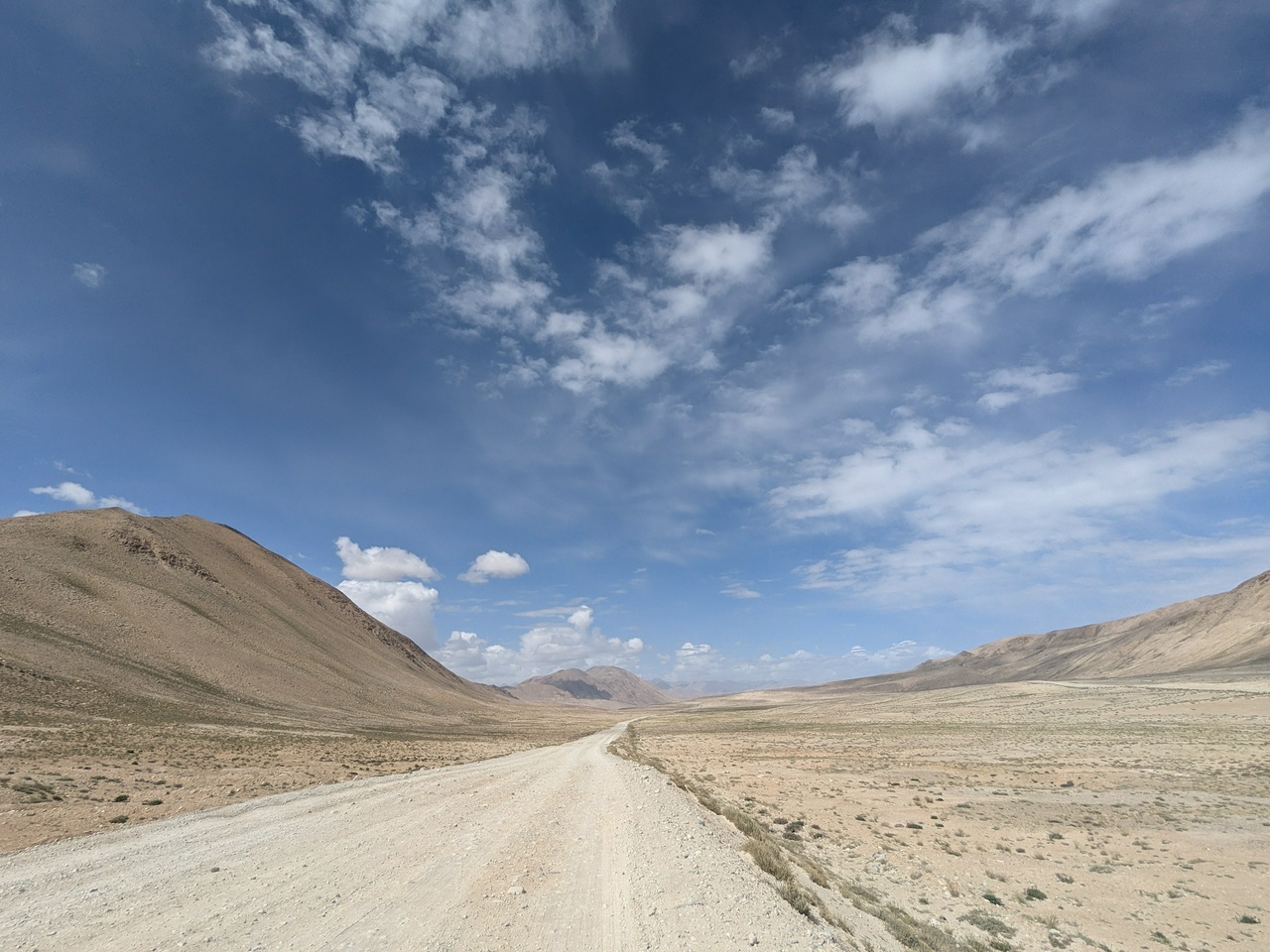

By early evening, we rolled into a tiny village and decided to stop for the night. The owner, wearing a traditional Kyrgyz hat (locals here identify as Kyrgyz, even though they’re Tajik citizens), sat with us and told us this was his favourite time of year. In winter, it drops to minus forty — the coldest inhabited place in Central Asia.
Dinner was stale bread, fried potatoes, and lentil soup. As the rain started and the light faded, it was exactly what we needed.
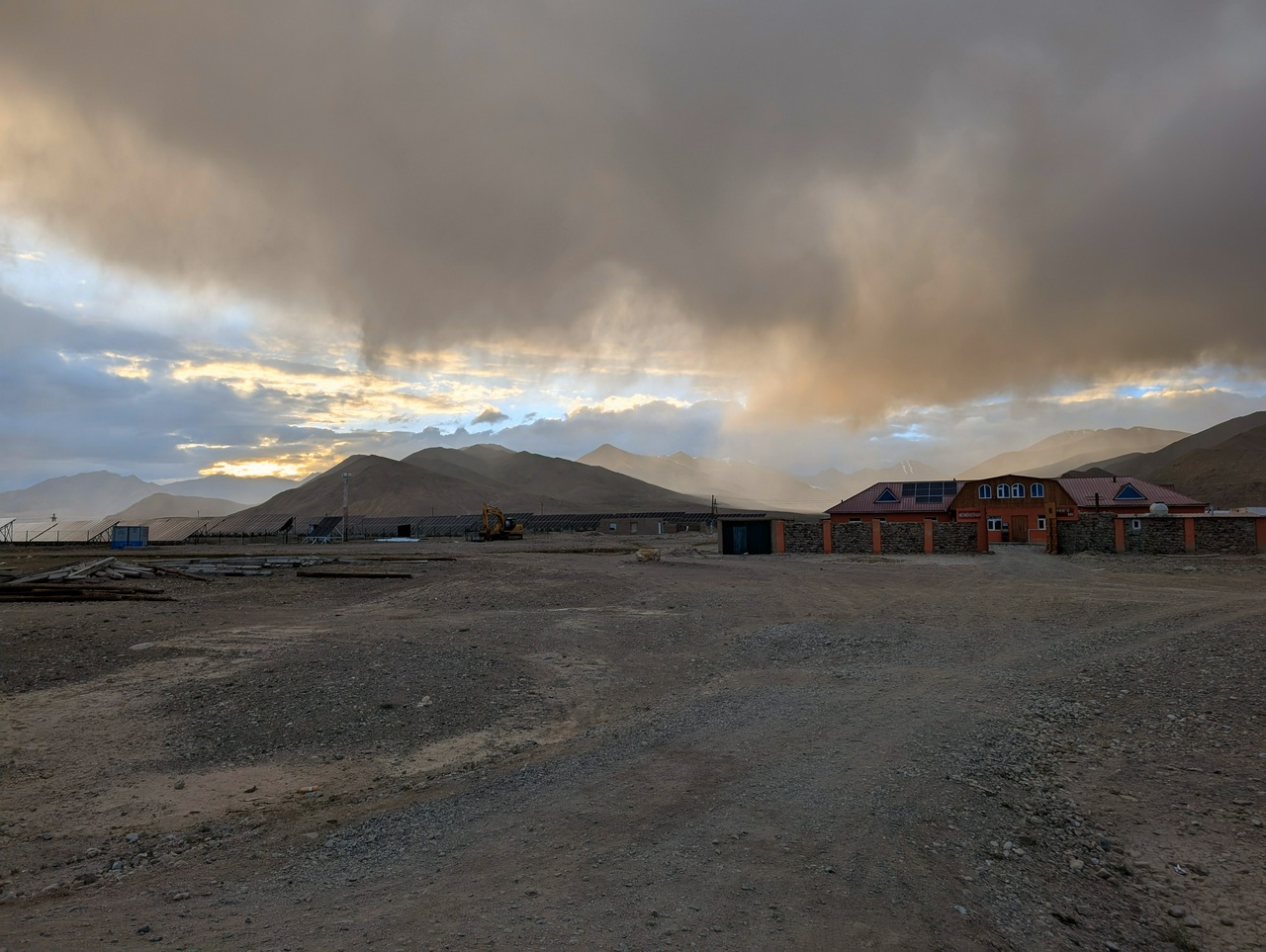
The next day brought another 200km of unbelievable views. We passed a town called Murghab, filled up on whatever fuel was available, and wandered through a shipping-container market. The altitude made us breathless within minutes, which was fine as the market didn’t have much to offer anyway.
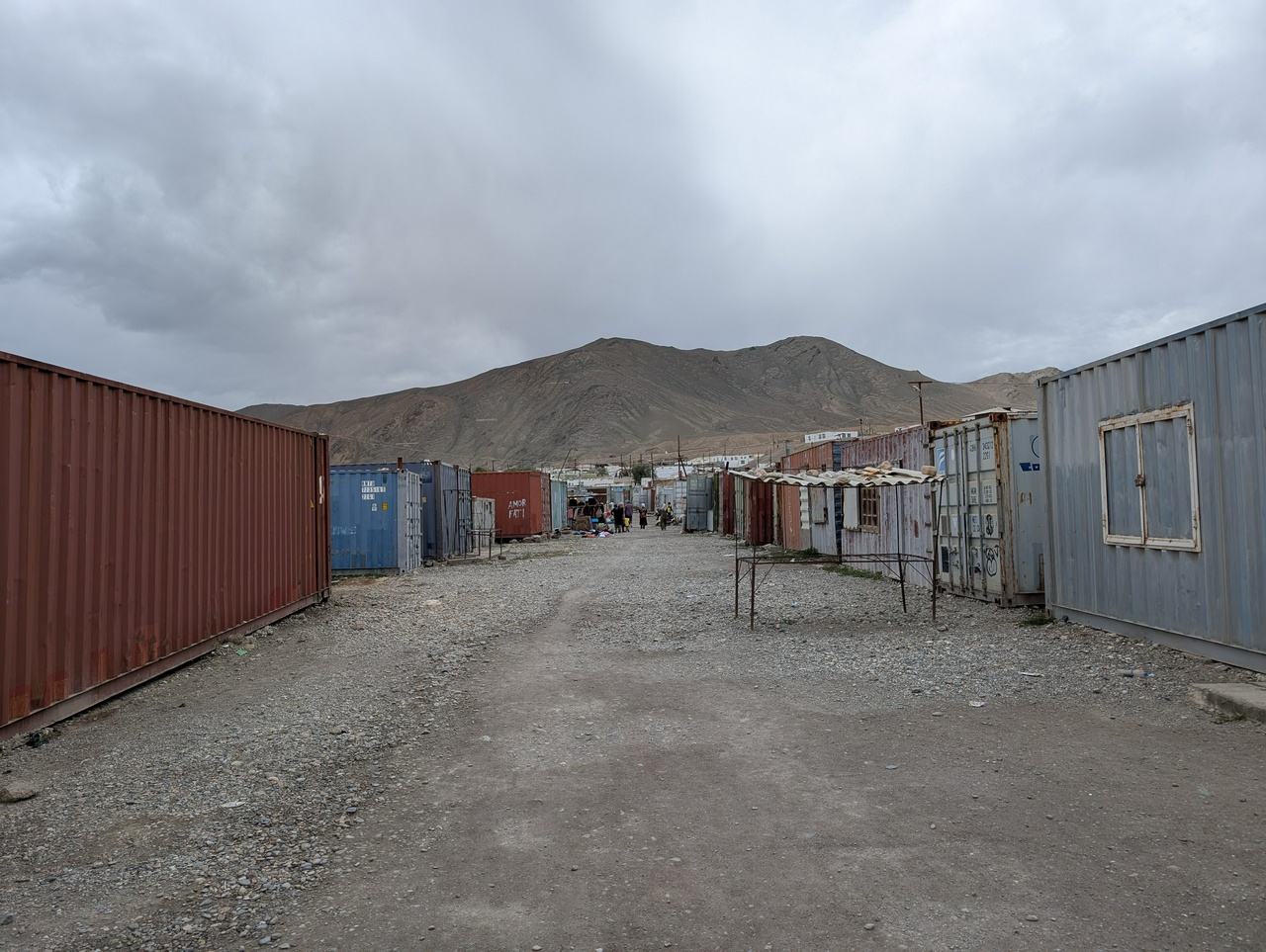
We sat on the roadside and ate our last bit of bread before pushing on to Lake Karakul — two hours of jaw-dropping scenery. We found a homestay near the lake with a large room full of beds. The mum said we could have it to ourselves (I guess the tourist traffic isn’t heavy here). Her daughter cooked us noodles and potatoes and served more stale bread and tea, which we enjoyed like it was a Michelin-starred meal.
We woke early the next morning and rode north, leaving Tajikistan and crossing into Kyrgyzstan via one of the highest border crossings in the world at over 14,000 feet, and a challenging ride too.
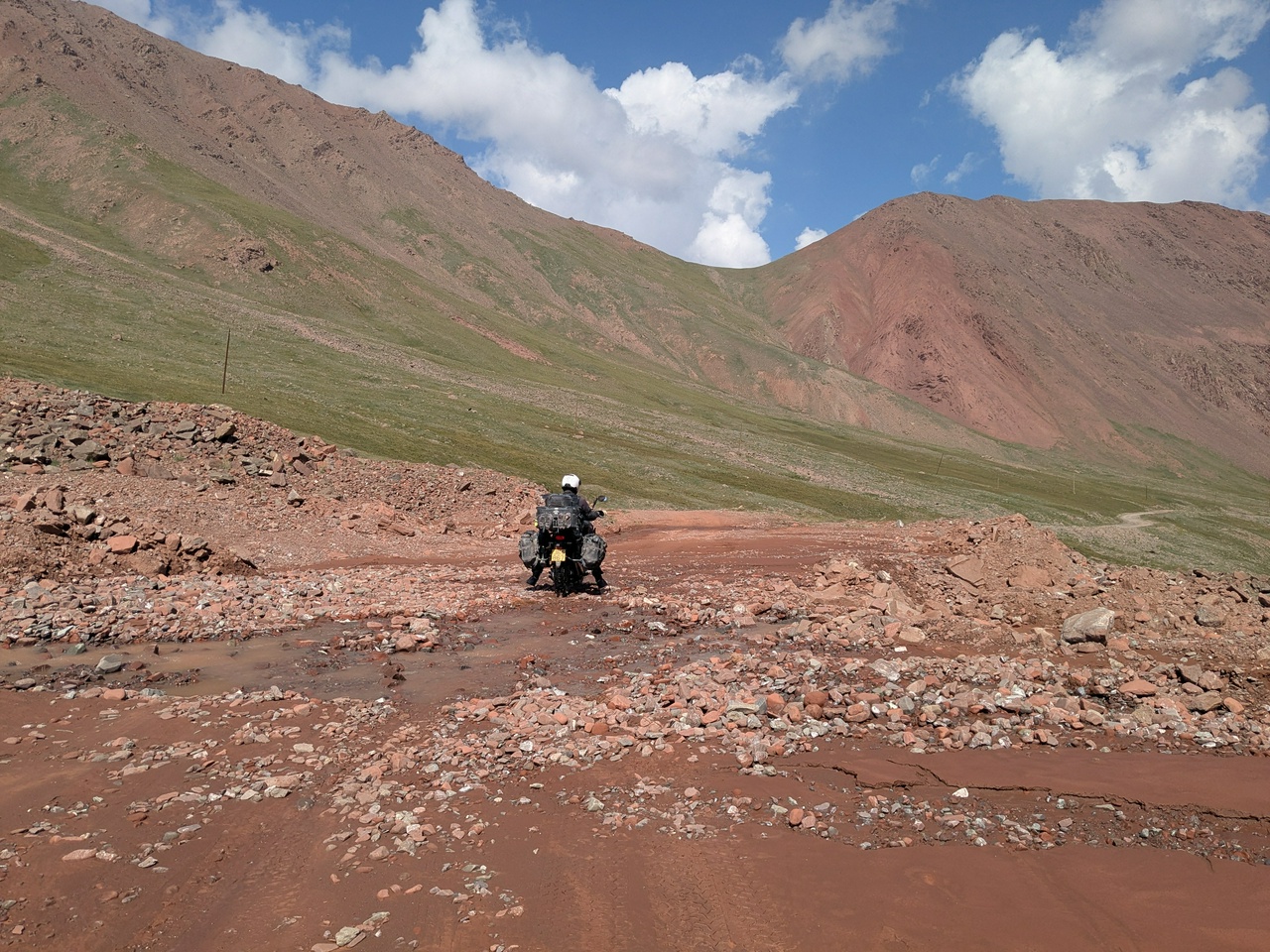
Our destination was Osh — officially the end of the Pamir Highway.
Next stop: one Stan closer to Japan.